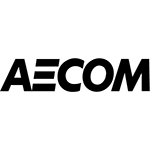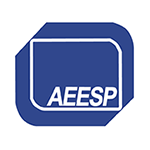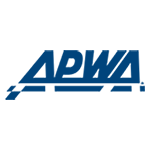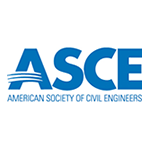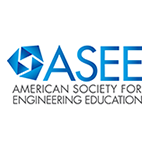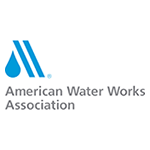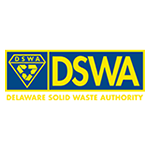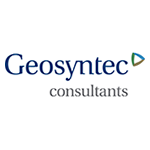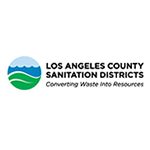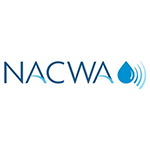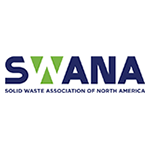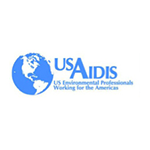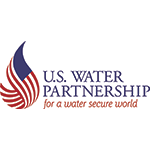2024 Excellence in Environmental Engineering and Science® Awards Competition Winner
Grand Prize - Planning 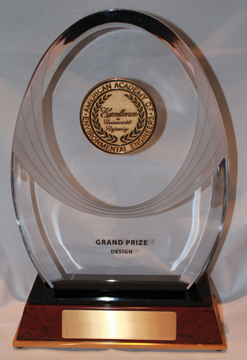
Santa Monica Recycled Water Master Plan
Entrant: Kennedy Jenks
Engineer in Charge: Dawn Taffler, P.E.
Location: Pasadena, California
Media Contact: David Ferguson, Ph.D., P.E., BCEE
Entrant Profile

Founded in 1919, Kennedy Jenks (KJ) is an employee-owned corporation specializing in the planning, design and construction of water, wastewater, and recycled water infrastructure in the United States.
A Proud History in Water Recycling
KJ has been committed to water recycling in California since wastewater was first recognized as a valuable renewable resource. We completed the first-ever water recycling facility at Golden Gate Park in the 1930s. Since then, we have completed well over 50 recycled water-related projects with a combined construction value of over $1B. Our services include all aspects of facilities planning and siting studies, predesign, final design, and construction support, including alternative project delivery.
A Partnership with the City of Santa Monica
The City of Santa Monica (City) is a community committed to protecting the environment and the Santa Monica Bay through achieving water self-sufficiency, maintaining high-quality drinking water, and investing in a resilient water supply system and infrastructure. KJ partnered with the City as the lead consultant on their Recycled Water Master Plan (RWMP) to support their goal to develop local, sustainable, and drought-resilient water supplies to reduce dependencies on imported Northern California and Colorado River water. KJ worked collaboratively with City staff to establish a road map for future recycled water expansion; building on more than a dozen recycled water planning studies the KJ project team developed in the past five years.
Key team members include:
- Dawn Taffler, PE LEED, AP Project Manager
- Paul Chau, PE Project Engineer
- David Ferguson, PhD, PE, BCEE Principal-in-Charge
Project Description
Integrated Approach to Close the Loop on the One Water Cycle
The City’s 2018 Sustainable Water Master Plan (SWMP) outlined the City’s strategy to maximize local water resources to achieve long-term water self-sufficiency and drought resilience. The SWMP consists of three key components:
- Increasing water conservation efforts.
- Increasing recycled water production through the Sustainable Water Infrastructure Project (SWIP),
- Expanding local groundwater production within sustainable yield limits and upgrading the City’s Arcadia Water Treatment Plant (WTP).
Water Reuse Opportunities
The expansion of recycled water use is a critical component in achieving the City’s goal of water self- sufficiency. Kenndy Jenks developed a Recycled Water Master Plan (RWMP) that builds on the projects implemented in the key SWMP and connects the dots between the City’s existing systems, facilities in construction and new facilities needed to reduce the City’s reliance on imported water supplies.
The City’s recycled water supply is derived from two facilities:
- (Urban and stormwater runoff and brackish/ saline groundwater supply treated at the existing Santa Monica Urban Runoff Recycling Facility (SMURRF) and
- Local wastewater and stormwater runoff treated at the recently constructed SWIP Advanced Water Treatment Facility (AWTF).
These two facilities produce up to 1.5 million gallons per day of advanced treated recycled water for non- potable applications and indirect potable reuse through groundwater injection.
The RWMP provides an integrated approach to guide the City’s future infrastructure investments to optimize recycled water supplies for:
- Non-potable reuse (NPR) including landscape irrigation and indoor use in dual-plumbed buildings.
- Indirect Potable Reuse (IPR) injecting highly purified recycled water into a groundwater aquifer used for drinking water supply. The City obtained regulatory approval for Groundwater Replenishment Reuse (GRR) via direct injection into the Olympic sub-basin on December 21, 2023.
- Direct Potable Reuse (DPR) introducing highly purified recycled water upstream of the City’s Arcadia WTP as a raw water augmentation scenario. Regulations for DPR were approved in California on December 19, 2023.
An Original and Innovative Approach to a Complex Market Assessment
A recycled water market assessment was performed in two parts:
- identify existing and potential future NPR customers; and,
- assess the potential deliveries for potable reuse via GRR and DPR.
An NPR market assessment identified over 200 potential existing and future irrigation and dual- plumbed customer, which could offset approximately 840 AFY of imported supply with local recycled water. To further refine potential alternatives, an innovative Geographic Information System (GIS)-based radius of cost-effectiveness (RoCE) methodology was applied to identify NPR customers that could be cost-effectively served by recycled water. The RoCE utilized a mathematical and unbiased approach to compare the cost of distribution pipelines to deliver recycled water against the cost to deliver that same supply for DPR.
For potable reuse, up to three new injection wells were identified to maximize GRR (940 AFY) in the Olympic Subbasin based on assumed injection rates and available groundwater capacity. Additional conveyance and treatment facilities were identified to deliver 1,130 AFY for DPR with a proposed strategy to meet the recently adopted DPR regulations.
Based on the available supply (1,680 AFY) and potential demands (2,910 AFY), the City was found to be supply-limited throughout the year, meaning not all demands could be served. To prioritize beneficial reuse opportunities with the limited amount of supply, a portfolio approach was used to compare different combinations of NPR, GRR and DPR deliveries. Thirteen portfolio concepts were developed, and conceptual-level costs estimated. Each portfolio maximized or prioritized one or more category of reuse, which allowed for the comparison of costs and benefits across multiple combinations of projects.
Selecting a Balanced Portfolio for Environmental, Social, and Economic Advancement
After multiple workshops with the City and community engagement with the City’s Commission on Sustainability, Environmental Justice, and the Environment, a preferred, balanced portfolio was selected to define a program that can be delivered by the City, embraced by City leadership, and supported by the community.
The preferred portfolio best balances the need to meet the objectives of the City’s Recycled Water Ordinance through NPR, support the GRR project currently in design and construction, and provide an opportunity for the City to be a leader in the implementation of DPR in California.
An economic analysis was conducted for the preferred portfolio to assess potential pricing policies and analyze rate impacts for customers. By embracing the One Water concept, the City embraces the concept that recycled water provides a local, sustainable, and resilient addition to diversify the City’s water supply portfolio.
A hydraulic model was created to analyze diurnal and maximum demand scenarios for the preferred portfolio. The model will serve as a valuable tool for the City to optimize the conveyance system as the recycled water system expands and implement demand management strategies to maintain level of service to customers.
The RWMP also explored the potential for the City to receive recycle water from the West Basin Municipal Water District and the City of Los Angeles to further expand local reuse. Finding a mutually beneficial regional project could benefit from economies of scale and contribute to greater independence from imported supplies in Los Angeles County. The City is committed to future conversations and consideration of potential agreements to further explore the mutual benefits of an inter-agency program.
Quality
A collaborative approach with the City was used to develop the RWMP to ensure a quality road map for recycled water expansion serving multiple beneficial uses. A step-by-step transparent process was applied to justify the City’s approach to expand reuse and meet their sustainability goals. The Santa Monica Project Manager validated the quality of the document, noting that of the four master planning documents developed since 2022 in support of the SWMP, the RWMP was the best planning report the City had received by far.
Click images to enlarge in separate window.
 |
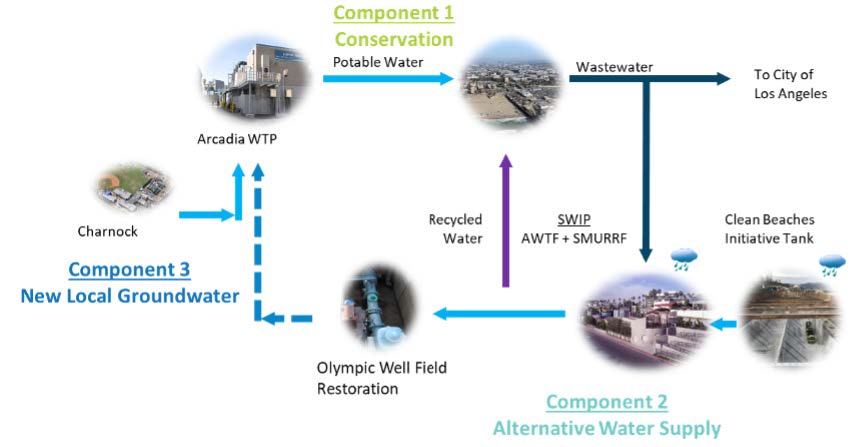 |
|
Figure 1: Master Plan Approach. The expansion of recycled water use is a critical component in achieving the City’s goal of water self-sufficiency and enhance drought resiliency. The goal of the Santa Monica Recycled Water Master Plan (RWMP or Master Plan) is to guide the planning of and capital investments in future recycled water infrastructure development for the City. This figure illustrates key steps in the Master Plan’s overall approach.
|
Figure 2: Closing the Loop on the City’s One-Water Cycle. The City’s 2018 Sustainable Water Master Plan (SWMP) outlined the City’s strategy to develop an integrated approach to maximize local water resources in order to achieve long-term water self- sufficiency and drought resilience. Construction of the SMURRF upgrades and the SWIP AWTF were completed in 2023, and the new groundwater injection well and upgrades at the City’s Arcadia WTP are scheduled for completion in 2024. Component 2 represents offsetting 10% of City’s drinking water supply with recycled water.
|
 |
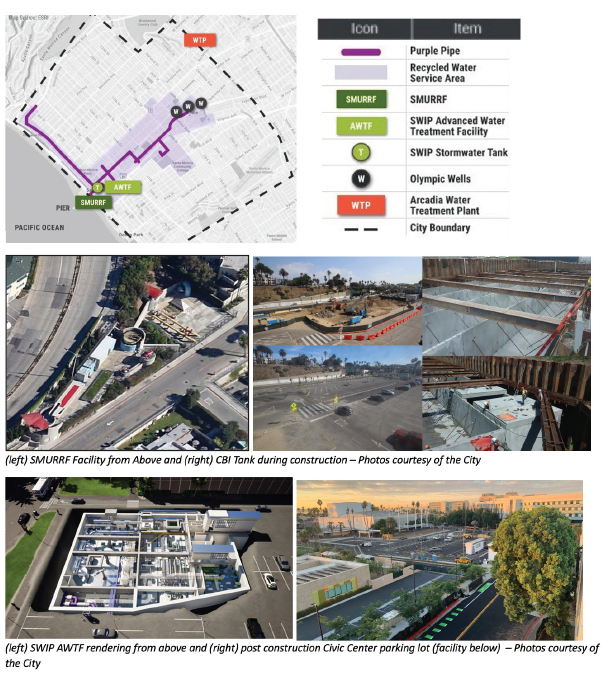 |
|
Figure 3: Existing Recycled Water System and Recycled Water Service Area. In parallel to infra-structure upgrades, the City has implemented a Recycled Water Ordinance and developed Recycled Water Guidelines, Policies, and Procedures (RW Guidelines) to support expansion of the City’s recycled water distribution system. The Recycled Water Ordinance, adopted in March 2022, formalizes water recycling requirements, describes the applicability for mandatory recycled water use and allowable exemptions, and establishes a recycled water service area within the City limits.
|
Figure 4: Overview of Existing City Facilities. The City’s current non-potable recycled water supply is provided through the SMURRF, located adjacent to the Santa Monica Pier, and new SWIP AWTF. The SMURRF was commissioned in 2000 with the primary objective of eliminating contamination in Santa Monica Bay caused by stormwater and dry weather urban runoff. The City recently completed construction of the SWIP AWTF, an underground potable reuse treatment facility located beneath the Civic Center Parking Lot that is capable of producing 1,120 AFY (1.0 MGD) of advanced treated recycled water. The two facilities together produce a total of 1.5 MGD of advanced treated recycled water for NPR and IPR.
|
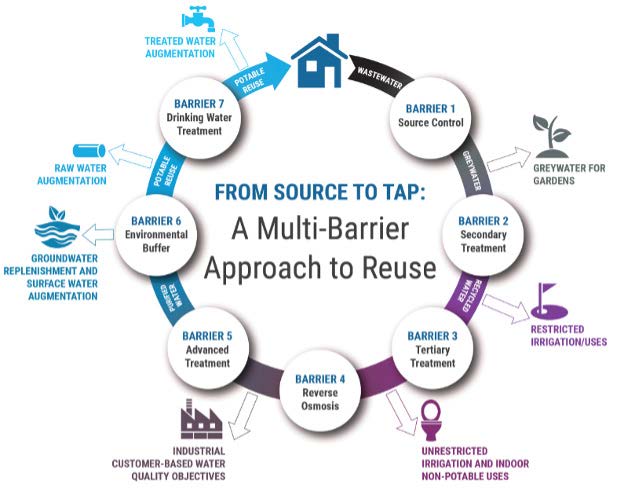 |
 |
|
Figure 5: Multi-Barrier Approach to Reuse. Recycled water begins as wastewater and undergoes a series of treatment steps, using a multi-barrier approach, to remove organic matter and pollutants. The production and use of recycled water must adhere to strict regulations stipulating the levels of treatment, allowable types of reuse, and water quality requirements. The water produced from the City’s SWIP AWTF and SMURRF meets California’s regulatory requirements for groundwater replenishment.
|
Figure 6: Recycled Water Market Assessment Map. A recycled water market assessment was conducted to identify the type, location, and scale of potential beneficial reuse opportunities. Potential NPR customers are scattered throughout the City, with most having relatively small demands (less than 1 AFY). City facilities, parks and larger future developments were identified as anchor NPR customers that could drive backbone conveyance extensions. The highest potable reuse demand opportunities for are via IPR (triangles) and DPR (square).
|
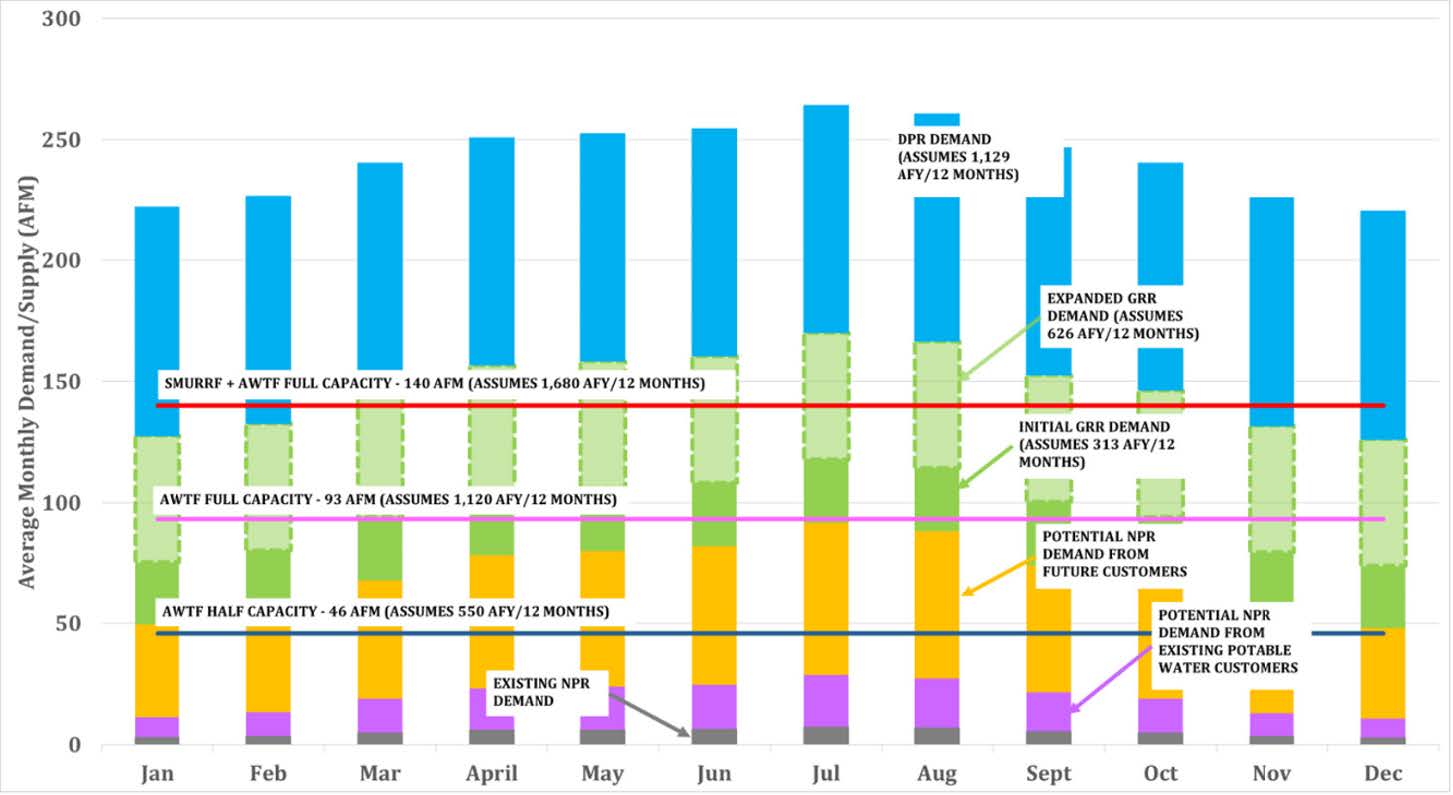 |
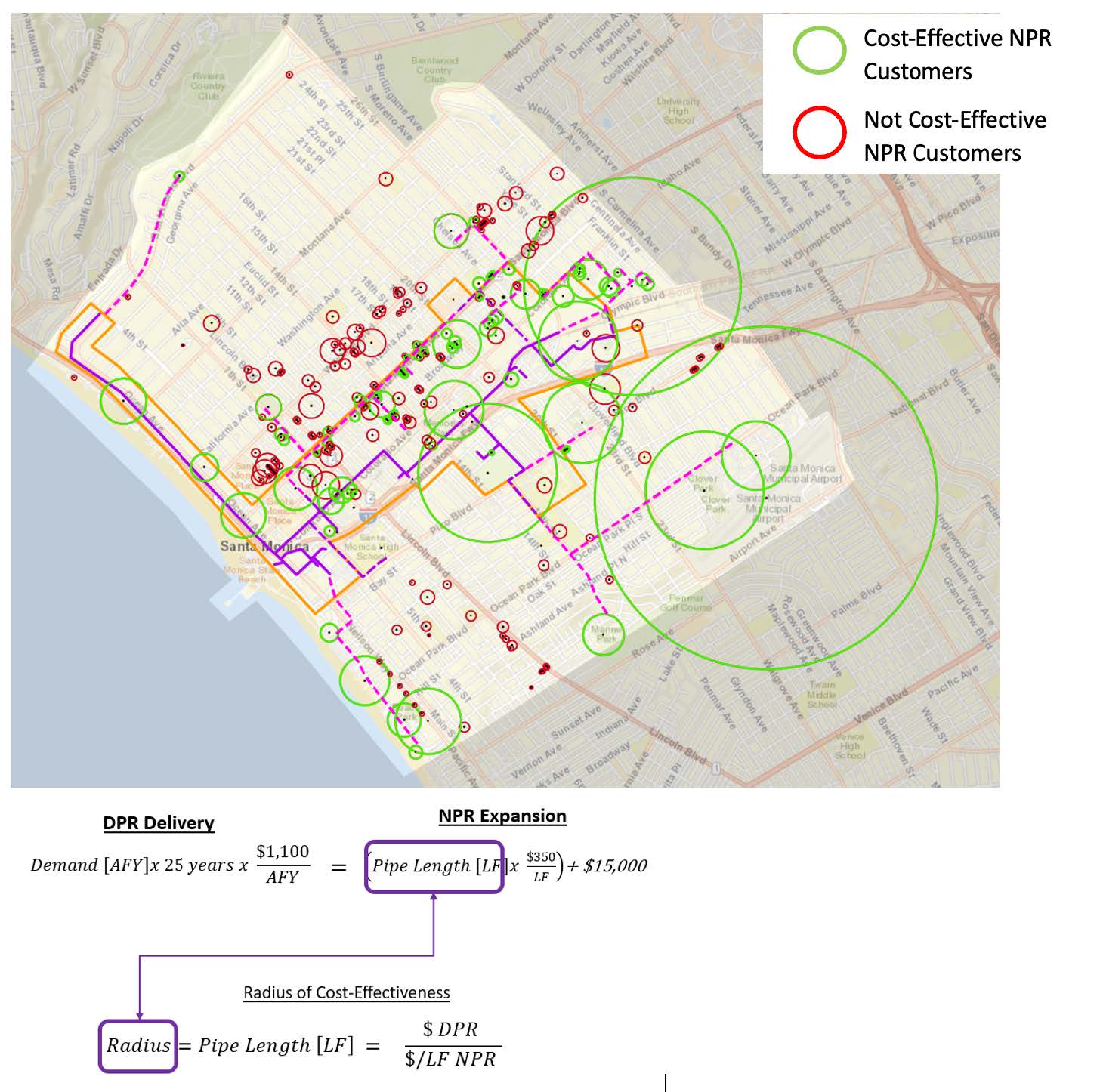 |
|
Figure 7: Average Monthly Recycled Water Supply and Demand. Based on the identified demands and available supply, the City is supply limited throughout the year, meaning they would be unable to meet the maximum demands for NPR, GRR and DPR. The RWMP explored various combinations of demands that could be met while maintaining the level-of-service to all customers (e.g., summer irrigation and peak day demands for NPR would limit the amount of potable reuse that could be achieved on a seasonal or daily basis).
|
Figure 8: NPR Radius of Cost-Effectiveness Results. Utilizing a GIS-based model, a radius of cost-effectiveness analysis was conducted to strategically determine which NPR customers would be most cost-effective to connect to a potential backbone extension or the City’s existing NPR system. This analysis helped refine the limit of NPR expansion while taking into consideration expansion for GRR and DPR using a mathematical and unbiased approach.
|
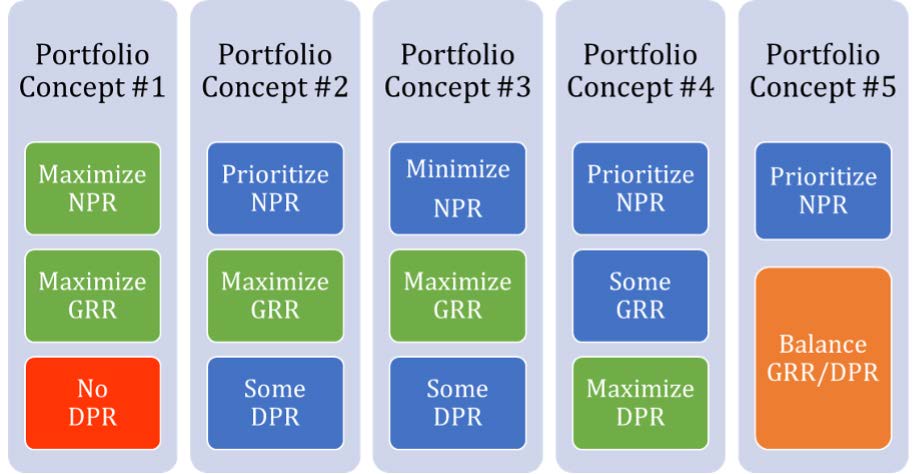 |
 |
|
Figure 9: Summary of Portfolio Concepts. This figure provides a graphical representation of the different portfolio concepts, highlighting beneficial reuse types that are maximized in each portfolio concept. All five portfolios would achieve reuse of 1,680 AFY, which is the full amount of advanced treated recycled water that would be available with the SMURRF and SWIP AWTF operating at full capacity.
|
Figure 10: Portfolio Construction Cost Summary. A planning-level opinion of construction costs was developed to facilitate an economic comparison of thirteen portfolios. The construction cost (left access) shown by the vertical bars, reflects the investment needed construct infrastructure associated with each portfolio. The colored shapes note the amount of recycled water delivered (right access) and illustrate the distribution of reuse categories for each portfolio.
|
 |
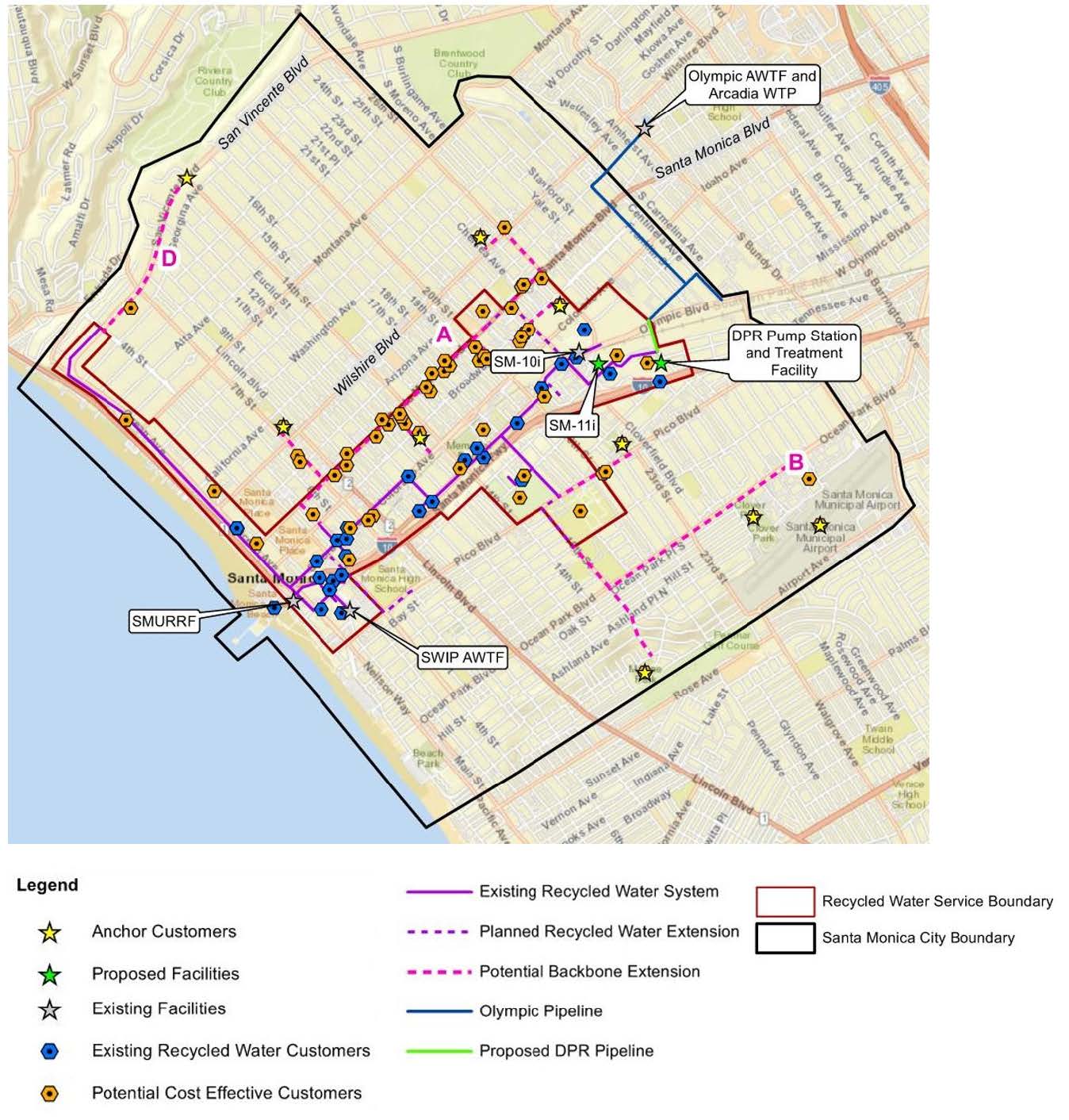 |
|
Figure 11: Portfolio Annual Unit Construction Cost Summary. The annualized unit construction is based on an interest rate of three percent and facility life divided by the amount of recycled water delivered (1,680 AFY for each portfolio as shown in Figure 10). Together, Figures 10 and 11 helped the City to hone in on a portfolio that would best balance NPR, GRR, and DPR to develop a robust, reliable, and affordable program that can utilize the City’s available recycled water supplies.
|
Figure 12: Preferred Portfolio Facilities: This figure represents the City’s preferred capital-investment portfolio to guide future expansion of the NPR recycled water system, prioritizing the airport redevelopment project and serving key customers in the community to promote support for the recycled water program. The preferred portfolio commits to two injection wells to replenish the Olympic Well Field and sending the remaining flow to the Olympic AWTF and Arcadia WTP for DPR. The preferred portfolio recommends expanding recycled water to priority customers such as parks and schools, investing in additional groundwater recharge opportunities, and investigating the feasibility for a future DPR framework.
|
|
















